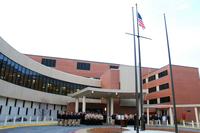Six years after the General Accountability Office recommended the Defense Department coordinate its efforts to train pilots of unmanned aerial vehicles regardless of service branch, and more than a year after a senior Pentagon official agreed with the approach, the plan is now being drafted.
Brenda S. Farrell, Director, Defense Capabilities and Management for the General Accountability Office, told Congress on Wednesday that a Rand Corp-drafted strategy delivered to the DoD in 2014 failed to detail how the various services should coordinate the training.
Farrell told the Senate Armed Services Committee that the Pentagon early last year saw the savings and lessons value in coordinated training, with one senior official noting the similarities between the Air Force’s MQ-1B Predator and the Army’s MQ-1C Gray Eagle, as well as between Air Force’s RQ-4 Global Hawk platform and the Navy’s MQ-4C Triton.
“We therefore recommended that the Office of the Under Secretary of Defense for Personnel and Readiness address how the services should coordinate with one another in the DOD-wide [unmanned aerial systems] training strategy the office was drafting at the time we issued our report,” Farrell said.
A coordinated training program would come about as the services, in particular the Air Force, continue to try to meet combatant commanders’ demand for unmanned platforms, including the armed Predator and MQ-9 Reaper, and intelligence, surveillance, reconnaissance platforms such as Global Hawk.
Air Force Gen. Herbert “Hawk” Carlisle, commander of Air Combat Command, called the remotely piloted aircraft “victims of [their] own success.”
“An insatiable demand for RPA forces has stretched the community thin, especially our airmen performing the mission,” Carlisle said.
The Air Force has especially been pushing to crank out more pilots for the unmanned strike and surveillance systems. Before 2016 is up the first enlisted airmen may be piloting the Global Hawk.
The Air Force currently trains about 180 RPA pilots annually, but loses about 230 – often because of burnout from the odd shifts, long hours and intensity of the mission. But next year it anticipates graduating close to 400 new pilots, he said.
“We are taking steps to remedy this problem, stabilize the RPA enterprise, retain our valuable airmen, and sustain and eventually increase the capability our RPA community delivers to the warfighters,” he said.
Bryant Jordan can be reached at bryant.jordan@military.com. Follow him on Twitter at @bryantjordan.








